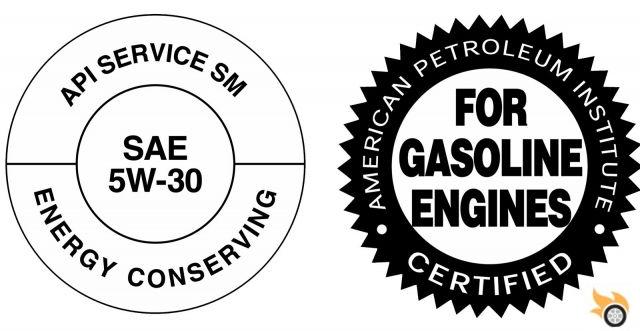
Introduction
In the world of motors and automotive mechanics, it is essential to understand the meaning and importance of the letters and codes present in motor oils. These codes and letters, such as SAE, API, and W, provide crucial information about the different types of oil, their characteristics, and how to interpret the nomenclature used in lubricants. In this article, we'll explore each of these codes and letters in detail, and answer the most frequently asked questions on the subject.
What do the letters and codes on motor oils mean?
The letters and codes present in motor oils are standards and specifications set by organizations such as the Society of Automotive Engineers (SAE) and the American Petroleum Institute (API). These codes and letters provide information about the oil's viscosity, performance and quality, which is crucial to ensuring optimal engine operation.
SAE
The Society of Automotive Engineers (SAE) sets viscosity standards for motor oils. Viscosity is a measure of a liquid's resistance to flow, and in the case of motor oils, refers to its ability to lubricate and protect moving engine parts. The SAE code is made up of two numbers separated by a W, which stands for Winter. The first number indicates the viscosity of the oil at low temperatures, while the second number indicates the viscosity at high temperatures. For example, an SAE 10W-30 oil has a viscosity of 10 when cold and 30 when hot.
API
The American Petroleum Institute (API) sets quality and performance standards for motor oils. The API code is made up of two letters, where the first letter indicates the type of engine for which the oil is designed (for example, S for gasoline engines and C for diesel engines), and the second letter indicates the performance level. of the oil. The higher the letter, the better the performance of the oil.
Types of oil and how to interpret the nomenclature
There are different types of motor oil, and understanding the nomenclature used in lubricants is essential to choose the right one for each vehicle. Here are some of the most common oil types and how to interpret their nomenclature:
Mineral oil
Mineral oil is the most basic type of motor oil and is obtained by refining crude oil. Its nomenclature may include the SAE code and the API code corresponding to its quality and performance.
Synthetic oil
Synthetic oil is produced using chemical processes and offers greater resistance to high temperatures and better protection against wear. Its nomenclature will also include the SAE code and the corresponding API code.
semi-synthetic oil
Semi-synthetic oil is a mixture of mineral oil and synthetic oil, which combines the advantages of both types. Its nomenclature will follow the same format as the other types of oil.
Frequently Asked Questions (FAQs)
1. What is the importance of using the correct oil for my engine?
Using the right oil for your engine is essential to guarantee its correct operation and prolong its useful life. Oil lubricates the moving parts of the engine, reduces friction and wear, and helps dissipate the heat generated by combustion. In addition, oil also helps keep the engine clean by trapping particles and debris. Using the wrong oil can cause engine damage, decrease engine performance and increase fuel consumption.
2. How can I find out what kind of oil my engine needs?
The best way to find out what kind of oil your engine needs is to check your vehicle's owner's manual. In this manual, you will find the manufacturer's specifications and recommendations on the type of oil and the proper viscosity for your engine. You can also consult with a trusted mechanic or use online tools to help you find the correct information for your vehicle.
3. How often should I change my engine oil?
Oil change frequency may vary depending on the type of oil, driving conditions, and manufacturer's recommendations. In general, it is recommended to change the oil every 5,000 to 7,500 kilometers or every 6 months, whichever comes first. However, it is important to consult your owner's manual or manufacturer's recommendations for accurate oil change interval information for your specific vehicle.
Conclusion
In summary, understanding the meaning and significance of the letters and codes present in motor oils is essential to keeping an engine in good condition and ensuring its optimal performance. The SAE and API codes provide information on the oil's viscosity, performance and quality, while the nomenclature used on lubricants indicates the type of oil and its composition. By using the right oil and following the manufacturer's recommendations, you can ensure that your engine runs efficiently and lasts.
We hope this article has been helpful in better understanding the letters and codes in motor oils. If you have any additional questions or want to share your experience, feel free to leave a comment below. We would love to hear your opinion!
Until next time!
The Pistonudos.com team


























